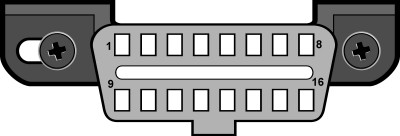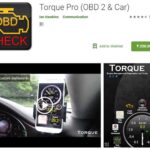Determining OBD-II compliance for your BMW 2001 325 depends on where it was originally sold. This article clarifies OBD-II requirements for vehicles sold in various regions, specifically addressing whether a 2001 BMW 325 is OBD-II compliant.
OBD-II Compliance Based on Region of Sale
OBD-II (On-Board Diagnostics version 2) is a standardized system that allows external devices to access diagnostic information from a vehicle’s computer. Compliance with this standard isn’t determined by the vehicle’s manufacturing location but by its intended market.
United States: All cars and light trucks sold in the US from model year 1996 onwards are required to be OBD-II compliant. This is mandated by federal law and enforced by the Environmental Protection Agency (EPA).
European Union: The EU adopted OBD-II compliance in phases:
- Gasoline Vehicles: Gasoline-powered vehicles sold in the EU were required to be OBD-II compliant starting in model year 2001. This means a 2001 BMW 325 sold new in the EU should be OBD-II compliant.
- Diesel Vehicles: Diesel vehicles sold in the EU had a later compliance date, starting in model year 2004.
Other Regions: Compliance dates vary for other regions. Refer to the table below for specific countries and model years:
| Country of Sale | Full OBD-II Compliance (Model Year) | Limited OBD-II Compliance (Model Years) |
|---|---|---|
| European Union (Diesel) | 2007 | 2004-2006 |
| European Union (Petrol) | 2002 | 2001 |
| Canada | 1998 | |
| Australia (Petrol) | 2006 | |
| Japan | 2008 | 2003-2007 |
Confirming Compliance for Your BMW 325:
Since your BMW 325 is a 2001 model year, if it was originally sold in the European Union as a gasoline vehicle, it should be OBD-II compliant. However, to be absolutely certain:
- Check the Vehicle Emission Control Information Label: Look under the hood for a label explicitly stating OBD-II compliance (e.g., OBD II, EOBD, or JOBD).
- Consult the Owner’s Manual: Your owner’s manual might contain information about OBD compliance.
- Contact a BMW Dealership: A dealership can confirm compliance based on the vehicle’s VIN.
 An image of the SAE standard J1962 Vehicle Connector used for OBD-II information.
An image of the SAE standard J1962 Vehicle Connector used for OBD-II information.
16-Pin Connector Doesn’t Guarantee OBD-II: The presence of a 16-pin connector does not automatically mean the vehicle is OBD-II compliant. Some manufacturers used this connector before OBD-II became a standard.
Conclusion: Is Your BMW OBD-II Compliant?
A BMW 2001 325 sold new in the European Union as a gasoline-powered car is likely OBD-II compliant. However, confirming compliance through the methods outlined above is essential for accurate diagnosis and repair. If compliant, you can use OBD-II scan tools for diagnostics. If not, specialized equipment might be required.
